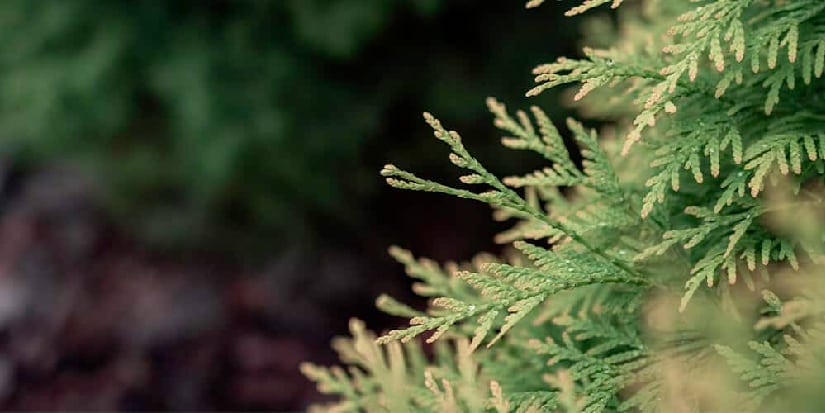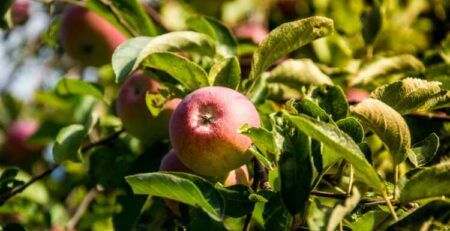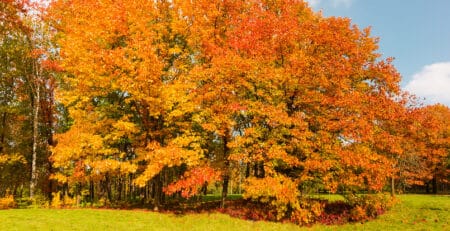Why is my Cedar Tree Turning Brown?
Are you wondering why your cedar trees are turning brown? There is a multitude of reasons as to why this could be happening to your cedar tree. We break down some of the significant reasons your cedar tree is turning brown and what you can do.
Here is a list of reasons why your cedar tree is turning brown:
- Fungal Diseases
- The Type of Soil Used
- Aphids
- A Dry Spell
- Root Desiccation
- Crawler Mites
- Bad Twine and Cloth
- Water Stree
- Girdling or Ring-Barking
- Too Much Plant Food
- Too Much Heat:
- Root Rot
1. Fungal Diseases
Sometimes cedar trees turn brown because of fungal diseases. Luckily, somebody can usually address fungal diseases in three steps.
- Look for small black spots on the foliage in the summertime.
- If you see them, get rid of contaminated branches to avoid further spread.
- If the issue continues, have your local garden center suggest an antifungal spray.
2. The Type of Soil Used
The type of soil used can play a big role in whether or not cedar trees turn brown. The wrong kind of soil can be too sandy or too clay-like, which can cause the roots to not be able to get enough oxygen and lead to the tree turning brown.
Also, if the pH of the soil is not ideal, it can create an environment that is hostile for cedar trees and cause them to turn brown.
Another common issue is improper soil drainage. If the soil around a cedar tree doesn’t drain well, water can pool around the roots and cause the tree to stress.
Finally, cedar trees need a specific type of soil in order to thrive. If the soil does not have enough organic matter, it can be difficult for cedar trees to absorb the nutrients they need, which can also lead to them turning brown.
By choosing the right type of soil and making sure it has the proper pH and nutrient levels, you can help prevent cedar trees from turning brown.

3. Aphids Can Cause Cedar Trees to Turn Brown
Aphids are small sap-sucking insects different than the Emerald Ash Borer. Make sure to examine foliage closely for masses of these little, soft-bodied pests that can be orange, green, black, or brownish. Specialized sprays are readily available to deal with aphids, and also you can try some DIY alternatives.
4. A Dry Spell
If you examine the brownish fallen leaves and don’t see any areas or bugs, you can presume your trees are not obtaining enough water. Sprinkling thoroughly (a minimum of one or two times a week after planting, particularly in these warm summertime problems) is essential so that your cedars’ roots can take hold as well as spread. This is much more efficient than constant spraying or light watering. It can be done quickly by utilizing a soaker pipe along the cedars’ base for numerous hours to ensure that the dampness reaches into the plant’s origins. Watering needs to proceed well into the autumn till the ground is adhered maintain adequate moisture through the winter months. Cold wintertime winds can desiccate the vegetation– when the soil is iced up, your cedars can not use up dampness to change what is lost from their foliage.

5. Root Desiccation
In hot summer weather, it is important to protect newly transplanted trees against drying out by taking precautionary measures such as keeping root rounds wet during transportation and at the website. When dead trees are dug up, dry air can often be present between the roots and the growing hole. For best results, transplant new hedges in a warm climate and water them thoroughly to help cedars take root after being planted. To keep your cedars healthy during periods of drought, remember to water them deeply and regularly (once or twice a week), making sure that you give them enough water so that they do not dry out completely. Unlike plants grown in containers, which shed around 90% of their original system when excavated, balled and burlapped plants are more vulnerable to desiccation.
6. Crawler Mites
Examine the tree for tiny crawlers that are generally red, brown, or yellow. If you look closely, there is a chance you could see a bit of small webbing. These are much different than the Japanese Beetle. You can try using insecticidal soap on crawler mites. Sometimes the problem might be too advanced to treat as soon as they’re recognized.
7. Bad Twine and Cloth
Some twine might not break down quickly enough in the soil. If the twine is not removed correctly during growth, it might cut into the stem as it expands. It can create a steady decline and even death of the tree. Some burlap sacking is treated with copper sulphate (shows up blue or environment-friendly in colour) to avoid rot. If treated burlap is not eliminated, the copper sulphate can prevent new root development.
8. Water Stress Causes Cedar Trees to Turn Brown
Cedars have relatively shallow roots, making them susceptible to drought stress on well-drained sandy soils. This can be exacerbated by extreme changes in soil moisture, such as very wet conditions during the winter months followed by hot and dry summers. To help prevent these issues, hedges should be watered frequently during periods of aridity, and they should be mulched to maintain consistent soil moisture levels. In addition, excess water can cause root death due to a lack of oxygen in the root zone if the area is regularly flooded or overwatered. Care should also be taken not to plant cedars downhill from areas that are regularly watered, as this could lead to excessive moisture accumulation around the roots and increase the risk of fungal infections like water mold and mildew.

9. Girdling or Ring-Barking
A layer just below the bark transports food made in the leaves (photosynthesis) to the roots. Girdling or ring-barking can halt this process. If the food is not transported, then the cedar tree will suffer, and leaves will die.
10. Too Much Plant Food
Including too much plant food can damage roots and trigger leaf tips’ browning. Lack of fertilizer will likewise create a decline in your cedar tree’s health. Fertilizing the bush with a proper formulation three times in the growing period should help it stay strong. It is essential to comply with precisely the directions for applying plant foods to ensure that they are taken into the dirt and reach the plant’s roots. Do not feed in late summer as the bush needs to prepare to go dormant for the winter. You can fertilize with slow-moving launch nitrogen and phosphorus, which will provide the hedge with a springtime boost.
11. Too Much Heat
Foliage can bronze in mid-summer from heat and also desiccating winds.
12. Root Rot
Armillaria root rot is often found in cedar hedges. Branches turn brownish, commonly beginning on one side of the tree. White fungal mycelium can be discovered under the bark at the base of dead trees and in the roots. Black ‘strings’ called rhizomorphs spread the fungi from one tree to another. Unfortunately, there is no cure for Armillaria.

Some Frequently asked questions that can help you and your cedar tree:
How much should I water my cedar tree?
Cedars can tolerate a week without rainfall. For maximum watering: install a hose on top of the soil straight over the roots balls. It would help if you were aiming to water for around one hour every week. When the sun is not out, watering at night is more suitable, so you do not hurt the foliage. Water long enough so that the water soaks into more than just the surface of the soil.

What kind of soil is best for cedar trees?
When deciding on soil for cedar trees, remember that they prefer natural, moist, and healthy soil. Dig in an organic-based location and plant food right into the ground a couple of months before planting.
Cedars don’t like dry and sandy soils, along with excessively wet clay dirt. Water these plants strongly yet less frequently (particularly throughout the summertime or for new plantings).
Be sure to plant your cedar after the soil thaws in early spring. You can also plant after the summer. Keep in mind that late summer season heatwaves can affect the freshly planted tree.
Adding an annual application of fresh compost is beneficial. This moderates root warmth and also lowers the likelihood of weeds. Maintain mulch a minimum of 2-3 inches away from the trunks of the trees.
Should you trim cedar trees?
Fully grown cedar trees can reach heights (80+ feet) that can be hard to cut as they age. Call an expert tree removal company to cut down trees that are too high to cut with a ladder safely. Never try to trim tall trees by positioning a ladder on an unsafe surface or a tree with branches near the high-voltage line. Pruning tall-growing cedar trees right into a bush is possible with aggressive cutting yearly to eliminate all brand-new development. The trimming required to preserve a smaller sized size may result in a much less attractive form and look.

What is the best time to transplant cedar trees?
The best time to transplant cedar trees depends on a variety of factors, including the maturity of the tree, the plant’s location, and local weather conditions. In general, it is preferable to transplant cedar trees in early fall, late winter, or early spring. This is because these times offer cooler temperatures and less stress for the tree, which can help ensure that it adapts well to its new environment.
In addition, there are some considerations to take into account when transplanting potted cedars. Potted cedars can generally be transplanted at any time of year. However, if you plan on planting your tree during the hottest part of summer, it is important to monitor soil moisture levels carefully. If the soil dries out at any point during this process, there is a risk of wilting or even dying for your tree.
When choosing a location for your cedar tree, it is important to keep in mind things like sunlight exposure and soil quality. Ideally, you should plant your tree in a sunny spot with well-draining soil. Additionally, it is important not to plant your cedar too close to power lines or hardscapes like buildings and sidewalks. This will help ensure that your tree has enough space to grow and thrive.
Finally, it is important to water your cedar tree regularly during the first few years after transplanting. This will help the tree get accustomed to its new environment and prevent water stress as it grows. Additionally, you should consider mulching the tree’s base with wood chips or another organic material to avoid soil compaction and promote nutrient uptake.







